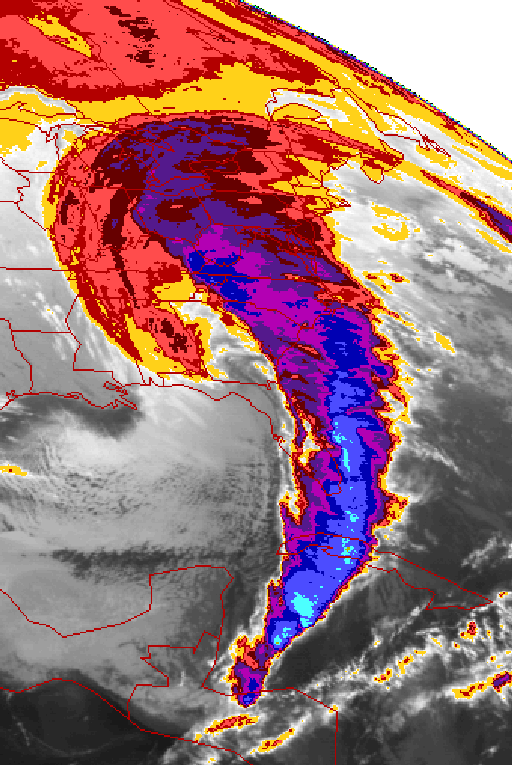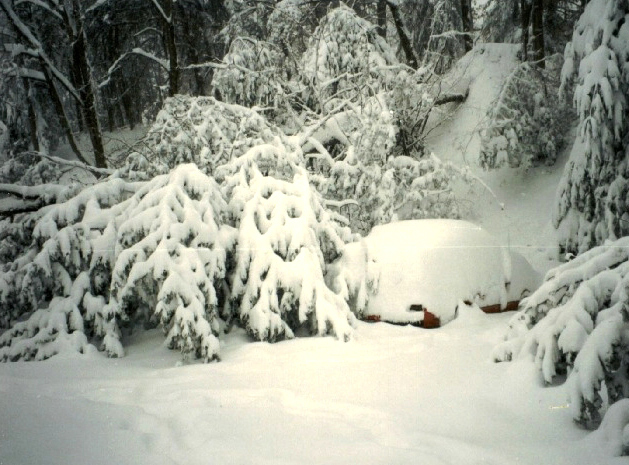Mid-March of 1993 saw an intense, wide-reaching snowstorm that affected Cuba and the eastern United States from Florida to Maine. It was impressive not simply because it brought heavy precipitation, but also because it was such as huge storm that it could from Central America to Canada at its peak.
Satellite image of the "Great Blizzard" on March 13, 1993 at 10z (Source)
The storm began forming over the Gulf of Mexico on March 12, and it moved up the east coast towards Canada over the following few days. A low pressure system over the Gulf accompanied by a stationary front formed and strengthened before moving towards the U.S. A squall line developed along the storm's cold front and swept over Cuba and Florida. Even the southernmost states received significant snowfall, with Florida getting 4 inches and some areas of Alabama receiving 12 inches of snowfall. This was especially unexpected so late into March. An impressive 44 inches of snow fell on Snowshoe, WV – the maximum for this system. However, some areas in the Appalachian region reported snowdrifts of up to 35 feet. Pressures were especially low, reaching 976 mb in Florida and only 960 mb in some areas of New England.
The weight of the snow caused a lot of damage and resulted in 318 deaths. Many factory roofs caved in, and decks that had been insufficiently anchored fell off houses. This was particularly the case in the South, where buildings were not engineered to withstand heavy snowfall. In total, the storm caused $8.7 billion in damages.
Trees collapse under the weight of the snow (Source)

